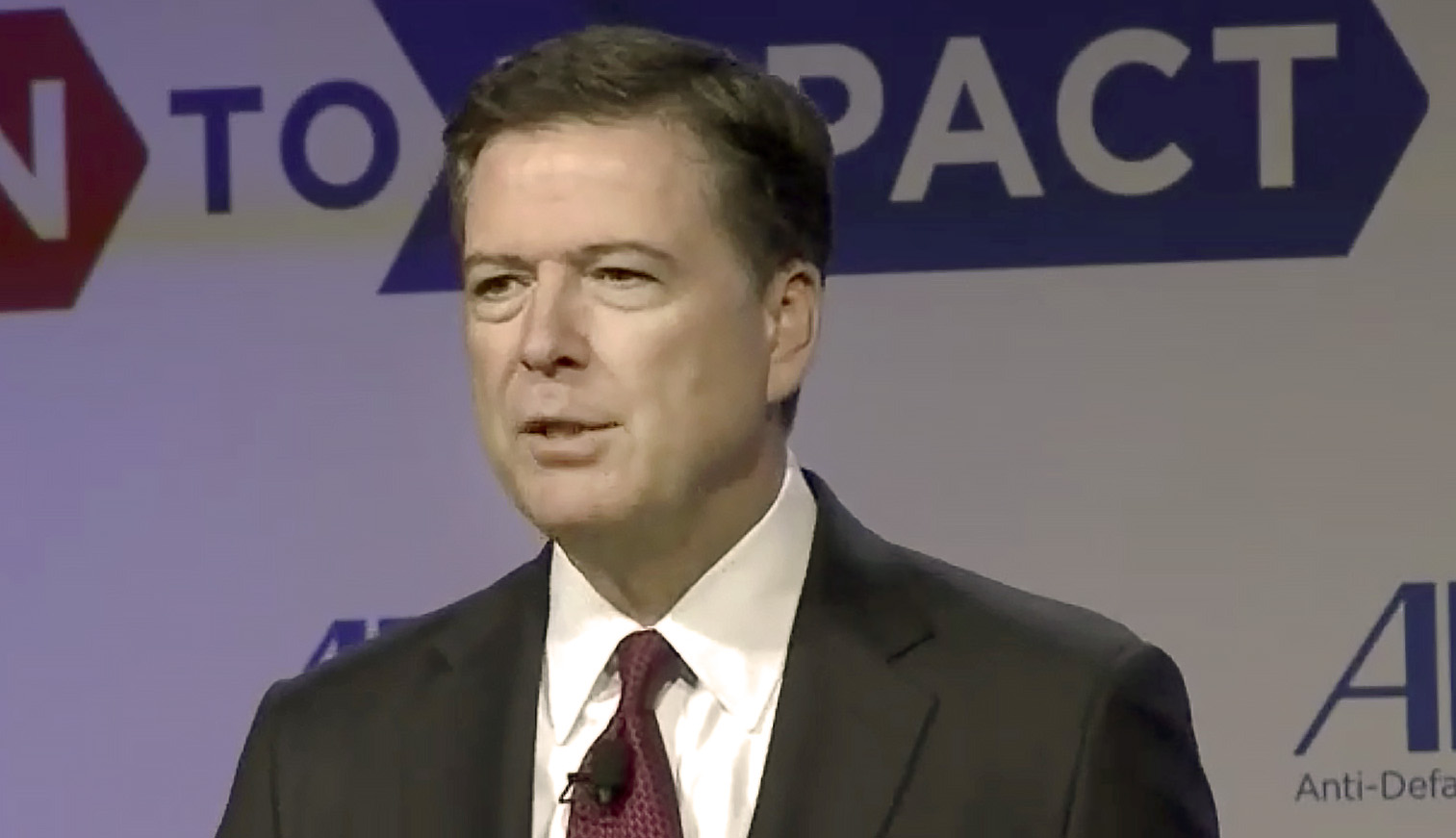
FBI Director James Comey lost his job May 9, 2017, when President Donald Trump fired him. Here Comey addresses the Anti-Defamation League (ADL) National Leadership Summit on May 8, 2017, in Washington, D.C. Photo from C-Span.
President Donald Trump fired FBI Director James Comey Tuesday in the latest clash between the Intelligence Community (IC) and the White House.
Trump based his decision on recommendations by Attorney General Jeff Sessions and Deputy Attorney General Rod Rosenstein, who argued in a three-page letter to Trump that Comey acted outside his authorities by speaking directly to the press about the investigation into Hillary Clinton’s use of a private email server.
Comey was sworn in as FBI director in September 2013. Andrew McCabe, the FBI’s deputy director since January 2016, will become acting director until Comey’s replacement is appointed.
The firing is the latest ember in a fiery relationship between Trump’s new administration and the IC.
In mid-February, news outlets announced that the White House planned a broad review of American intelligence agencies.
The news came the same day Trump blamed the IC for leaks resulting in his National Security Advisor Michael T. Flynn’s resignation.
The next day, the FBI released 398 pages of documents connected to a 1973 Justice Department lawsuit against Trump that alleged housing discrimination by his real estate company in New York City.
Tensions between the President and the IC have been high since before the election, so what exactly is this community?
Simply put, the IC is a group of 16 intelligence agencies or departments, like the FBI and NSA, and the overseer of them all is the Office of the Director of National Intelligence. The ODNI, created by 2004 legislation, exists to integrate efforts, make operations efficient, and communicate succinctly with the White House.
Trump chose former Republican Sen. Dan Coats of Indiana to be his Director of National Intelligence, and the Senate confirmed him in mid-March.
The DNI’s budget is broken into two parts. A DNI spokesperson told Air Force Magazine the office doesn’t disclose details about its budget or how it’s allocated among the intel community, nor how many employees each component has.
For 2016, DNI requested $53.9 billion for its national intelligence program, or the part of the budget addressing the Intelligence Community. It received $53 billion. The Military Intelligence Program top line budget request for Fiscal 2017 is $16.8 billion—a nearly $2 billion increase from the top line first announced in February 2016, the Department of Defense announced on May 9.
Below, we break out each of the Intelligence Community members alphabetically.
|
Intelligence Community Agency |
Since |
Headed By |
||
|---|---|---|---|---|
|
Office of the Director of National Intelligence |
2004 | Dan Coats | ||
|
Air Force Intelligence, Surveillance, and Reconnaissance |
1948 | Lt. Gen. VeraLinn “Dash” Jamieson, USAF | ||
|
Army Intelligence |
1885 | Lt. Gen. Robert P. Ashley Jr., USA | ||
|
Central Intelligence Agency |
1947 | Michael R. Pompeo | ||
|
Coast Guard Intelligence |
2001 | Rear Adm. Robert P. Hayes | ||
|
Defense Intelligence Agency |
1961 | Lt. Gen. Vincent R. Stewart, USMC | ||
|
Department of Energy’s Office of Intelligence and Counterintelligence |
2006 | Steven K. Black | ||
|
Department of Homeland Security’s Office of Intelligence and Analysis |
2005 | Patricia F. S. Cogswell | ||
|
Department of State’s Bureau of Intelligence and Research |
1947 | Daniel B. Smith | ||
|
Department of Treasury’s Office of Intelligence and Analysis |
2004 | Daniel McGlynn (acting) | ||
|
Drug Enforcement Administration’s Office of National Security Intelligence |
2006 | Doug Poole | ||
|
Federal Bureau of Investigation’s Intelligence Branch |
2014 | Joshua D. Skule | ||
|
Marine Corps Intelligence |
1939 | Brig. Gen. William H. Seely III, USMC | ||
|
National Geospatial-Intelligence Agency |
2003 | Robert Cardillo | ||
|
National Reconnaissance Office |
1961 | Betty J. Sapp | ||
|
National Security Agency/Central Security Service |
1952 | Adm. Michael S. Rogers | ||
|
Naval Intelligence |
1882 | Vice Adm. Jan Tighe? |
